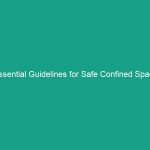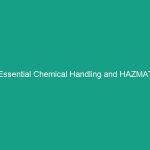Introduction
Good morning team,
Today, we are going to discuss a crucial aspect of our job that can significantly impact our Safety and well-being: Essential Guidelines for Securing a Construction Site: Avoid Costly Risks. Ensuring that our construction site is secure is not just about protecting our tools and materials; it’s about safeguarding our lives and those of our coworkers.
Understanding how to properly secure our construction site is vital to prevent accidents, injuries, and costly damages. Let’s dive into the essential guidelines you need to know.
Understanding Essential Guidelines for Securing a Construction Site
The phrase “Essential Guidelines for Securing a Construction Site” refers to the various Best Practices and measures that need to be implemented to ensure a safe working Environment. These guidelines are critical in mitigating risks associated with construction activities, which can often be hazardous.
By adhering to these guidelines, we not only protect ourselves but also enhance the efficiency of our operations. A secure site minimizes disruptions and accidents, allowing us to focus on the task at hand. Common misconceptions include thinking that securing a site is an optional step or that it only involves locking up tools at the end of the day. In reality, it requires ongoing vigilance and proactive measures throughout the project lifecycle.
Key Hazards, Risks, and Safety Considerations
Every construction site is fraught with potential Hazards. Here are some specific risks associated with inadequate site security:
- Theft and Vandalism: Construction sites often contain valuable equipment and materials, making them targets for theft.
- Unauthorized Access: Without proper security measures, unauthorized individuals may enter the site, posing safety risks to themselves and our crew.
- Environmental Hazards: Poorly secured sites can lead to environmental spills or accidents that could have been prevented.
- Injury Risks: A lack of security can lead to workplace injuries, whether from falling objects or accidents involving untrained individuals.
Ignoring these safety protocols can lead to severe consequences, including injuries, legal issues, and financial losses. Let us take this seriously to protect everyone involved.
Best Practices, Procedures, & Actionable Advice
Here are some essential guidelines and Best Practices you should implement to secure our construction site:
1. Access Control
Implement strict access Control Measures. Ensure that only authorized personnel can enter the site. Use:
- Identification badges
- Sign-in sheets
- Security personnel for monitoring
2. Site Perimeter Security
Establish and maintain a secure perimeter around the site. This can include:
- Fencing
- Security cameras
- Lighting to deter intruders, especially at night
3. Tool and Equipment Security
Secure all tools and equipment when not in use. Consider:
- Using lockable storage units
- Keeping an inventory of all equipment
- Removing valuable items from the site when possible
4. Emergency Response Plan
Develop and regularly update an emergency response plan. Ensure everyone knows their roles in case of an emergency. Conduct drills to practice these scenarios.
5. Regular Safety Meetings
Hold regular safety meetings to discuss security measures and encourage employees to voice their concerns. This fosters a culture of safety and vigilance.
Regulations, Standards, and Compliance
Compliance with safety Regulations is not just a legal obligation; it’s essential for protecting our workers. Be aware of the following Standards:
- OSHA Standards: The Occupational Safety and Health Administration provides guidelines that must be followed for construction site safety.
- ISO Standards: The International Organization for Standardization sets international safety standards that can help improve our practices.
- Company-Specific Policies: Always align with our company’s safety policies and Procedures.
Understanding and adhering to these regulations helps us create a safer work environment and reduces the risk of penalties.
Employee Engagement & Discussion
Now, let’s open the floor for discussion. I want to hear from you:
- What security challenges have you encountered on the job?
- Are there any specific measures you think we could improve upon?
- How can we better communicate about site security?
Your insights are invaluable. Sharing experiences can lead us to better practices and enhance our overall safety culture.
Conclusion & Key Takeaways
To wrap up, remember the essential guidelines for securing our construction site:
- Implement strict access control.
- Maintain a secure perimeter.
- Ensure tools and equipment are secure.
- Have a robust emergency response plan.
- Engage in regular safety discussions.
By applying these practices, we not only protect ourselves but also contribute to a safer workplace. Thank you for your attention and your commitment to safety. Let’s prioritize these guidelines and work together to ensure a secure construction site.


